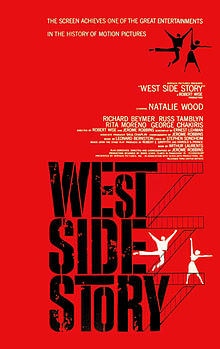In Kathleen Wheaton’s article in “Applause at Strathmore” magazine, she stated that Leonard Bernstein, composer of the West Side Story score, was unhappy with the film’s orchestration. Marin Alsop, Music Director of the Baltimore Symphony Orchestra, said that “the live score is much closer to what Bernstein originally intended.” Before last night, this idea would have seemed odd to me, especially because, according to Wheaton, the film’s orchestra was double the size of the original stage version. However, after witnessing Baltimore Symphony Orchestra’s incredible live orchestration to the 1961 Academy Award-winning Best Picture, I have a whole new perspective.

The orchestra had been building in volume and kept on becoming louder until they abruptly went silent at that precise moment. The member of the Jets snapped, and I could feel all the tension that had been building up until that moment suddenly release. I had seen the film before, but that moment did not affect me in that way until I witnessed the live orchestration last night.
Moments like that helped carry me through the film in a new way. Typically when I watch a movie musical like West Side Story, the instrumental portions of the music fade into the background due to so much else occurring on the screen. However, the intensity of the orchestra helped me notice interesting patterns in the music. For example, when Tony and Maria meet for the first time at the dance, the music changes to a slow and flowing rhythm. They share a moment of love and passion, and that gentler style is repeated each time they share a scene or song together. In contrast, the other characters in the film such as Bernardo and Riff, typically bring receive more staccato rhythms in the music. Unlike Tony and Maria, those characters represent the stubborn nature of the gangs and the hatred for outsiders, which seems to reflect in the music.
This repetition was particularly noticeable in “A Boy Like That/I Have Love.” Bernardo, Anita’s boyfriend, had just died, and Bernstein assigned her the staccato rhythm as she warned Maria of Tony’s evil. In that moment, she represented the Sharks’ hatred of the Jets while in contrast, Maria sang her response with the gentle, flowing rhythm from earlier in the film. The contrast of tempos was fantastic, and helped me feel the conflict in a new way.

Bernstein’s brilliant score did not stop there. The orchestra also highlighted some of the more fun moments of the movie. For example, in “Gee, Officer Krupke,” Bernstein created a playful quality to the song. The Jets jokingly blame their horrible parents for their criminal ways, and the music seemed to match the playful choreography full of jumps and hand stands. The lively orchestration brought this piece to life, and made me want to bounce along to the tune.
Interestingly however, that playful quality of music repeated later in the film. When Anita goes to find Tony for Maria and the Jets begin harassing her, a similar lively tune takes place. I had not noticed this moment in past viewings of the film, but Bernstein’s choice to insert a playful tune into such a serious and difficult to watch moment highlights one of the major issues presented in the film. The gangs view their actions as a sort of game, and rarely realize the possible consequences of their choices until it is too late.
Because the orchestration was so intense, the silences were even more noticeable. One of the most powerful moments of the film was when Maria found Tony right as he was shot, and Maria sang a few lines from “One Hand, One Heart” a capella. Then the orchestra responded as Tony slowly died, and the resulting moment was beautiful. The death scene had never affected me in that way. I knew it was coming, but the changes in the music brought forward the live orchestra seemed to intensify Maria’s emotion in the moment, and added a new spin to the film’s ending.
BSO’s West Side Story was a fantastic evening. I can safely say I agree with Berstein’s assertion. The live orchestration made the film magical, and I know I will never watch the movie the same way again.
BSO: West Side Story played one-night only on June 13, 2013 at The Music Center at Strathmore – 5301 Tuckerman Lane, in North Bethesda, MD. For future events, check their calendar.
There are three performances this weekend: tonight and tomorrow at 8 PM, and Sunday at 3 PM. at The Meyerhoff – 1212 Cathedral Street, in Baltimore, MD. For tickets, purchase them online, or call the box office (410) 783-8000.





Love this beautifully written review and now cannot wait to experience West Side Story more fully than ever before when I attend tomorrow’s performance at Meyerhoff. As Bernstein’s most receptive student and now brilliant interpreter Maestra Marin Alsop will undoubedly enrich our experience, too.